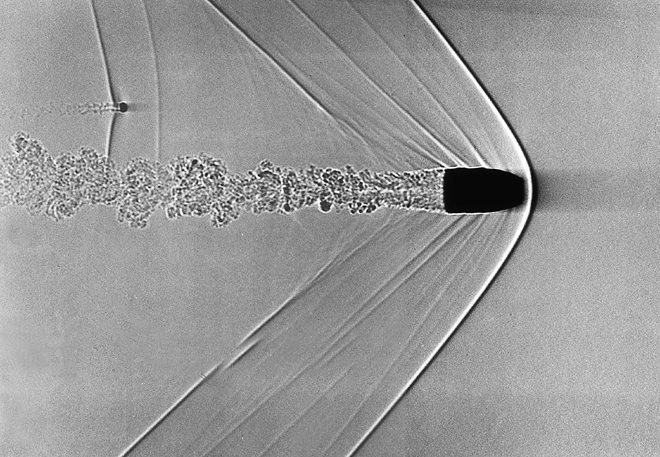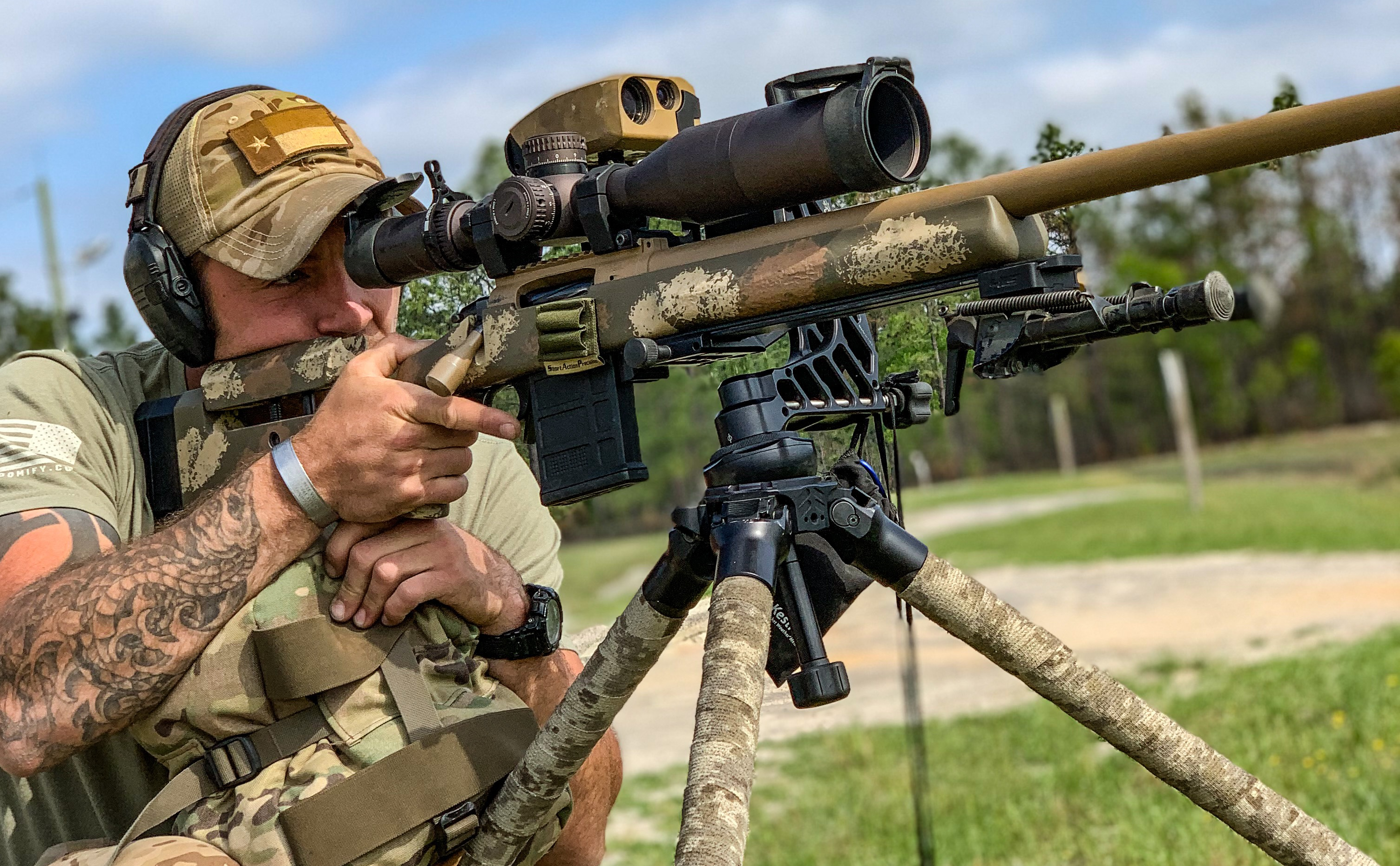Effects of Wind and Weather
Part II

A Shadowgraph image of a supersonic bullet. The Bow Shockwave is clearly visible as the V-shaped line at the front-most tip of the bullet
The initial period of instability is caused by the wall of air the bullet must hit as it leaves the muzzle of the weapon. The force of the bullet hitting the air causes the bullet to upset itself, however, its effect is short as the bullet will stabilize about 75 feet from the muzzle of the weapon.
The period of stability is that portion of flight where the bullet is flying to the target. This period of flight occupies about 98% of the bullets flight time, and the portion of flight where the bullet will attain its highest degree of accuracy.
The period of yaw occurs determined by the weight of the bullet. The weight of the bullet will determine how much effect yaw will have on the bullet. The lighter the bullet the sooner yaw occurs on the bullet. Simply stated the lighter the bullet the shorter the range yaw occurs. The heavier and longer the bullet, the more accurate it is at long range. This is the reason for the large caliber weapons in the deserts of Iraq and Afghanistan.
A bullet behaves in flight just like a gyroscope. The point will be well remembered by the shooter as it will determine the accuracy that long range targets are engaged. The gyroscope motion of the bullet will cause the bullet to drift at long range if the necessary corrections are not made prior to the shot. The shooter must accompany a windage and elevation correction according to the following formula:
Every 3 clicks of windage = 1 click of elevation.
A wind from the left will cause the bullet to strike the target low and to the right. A wind from the right will cause the bullet to strike high and to the left.
Remember, this effect is only apparent at long range e. g., the wind has increased in velocity from the right. This necessitates a windage correction of 3 clicks right and 1 click down for the shooter to maintain point accuracy.
The gyroscopic motion of the bullet is created by the rifling in the barrel. The rifling is the main cause of bullet accuracy over any given distance. However, if the bullet is damaged in any way this will cause it to travel in a spinning motion and reduce accuracy greatly. A bullet can be damaged by careless handling, or in the storing of the bullets.
Air resistance determines to a large degree what corrections need to be applied to the sights to accurately engage a target at any distance other than short range.
Jon Wilson

He was on a machine gun crew for a short time and through the push of a trooper and a 1SG (First Sergeant) was able to attend the U.S. Army Special Forces Sniper School and the U.S. Marine Corps Sniper Course. Jon graduated in the top part of his class and went on to instruct at the XVIII Airborne Corps AMTU sniper school for six months and then the NCOIC for the last year of his enlistment.
Jon deployed to Grenada in 1983 and was part of a sniper team for his battalion. Jon has always been serious about his craft and believes it is a masterful trade and that not all people can do it. He completed his SERE training at Ft. Bragg and Winter Training at Ft. Lewis, Washington. Jon would like to let readers know that his life is committed to his LORD and SAVIOUR JESUS CHRIST.
Jon Wilson subscribes to the Spotter Up way of life. “I will either find a way or I will make one”.
*The views and opinions expressed on this website are solely those of the original authors and contributors. These views and opinions do not necessarily represent those of Spotter Up Magazine, the administrative staff, and/or any/all contributors to this site.

I graduated from the 18th ABN SNIPER SCHOOL in 1983. Jon, (Sgt. Wilson) was the NCOIC. We were also in the same Bn, the 1/508th ABN. Infantry. He was in A Co. and I was in C Co. That was THE Sniper Course at the time. Johnathan was passionate about the Craft and demanded excellence. I could go on but will leave it be.